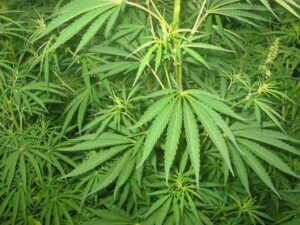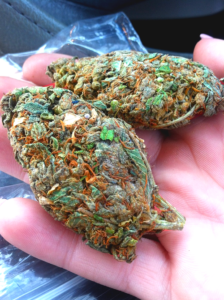
Weeds in Mildura — the complete, practical guide
Mildura and the surrounding Mallee country are a productive, iconic part of north-west Victoria. That same landscape—river red gums along the Murray, irrigated citrus and grape blocks, roadsides, remnant mallee and low-rainfall paddocks—also creates conditions where many weed species can establish, spread and cause real environmental, agricultural and social problems. This article explains which weeds matter in and around Mildura, why they matter, what council and state agencies are doing, and practical, evidence-based steps landholders and community groups can take to prevent and control them. Where useful, I link to official resources and plans so you can go straight to local guidance and regulatory lists. Weeds in Mildura
1. Why weeds in Mildura matter Weeds in Mildura
Weeds are more than an aesthetic nuisance. They:
- Compete with native plants and pastures for water, light and nutrients, reducing biodiversity and pasture productivity.
Because Mildura sits in an agricultural and riverine landscape, the economic and ecological costs can be significant. For that reason the Mildura Rural City Council (MRCC), Victorian state agencies and community landholders coordinate plans and regulations to tackle both established and “early invader” species. (Mildura Rural City Council)
2. Which weeds are a priority around Mildura? Weeds in Mildura
Priority weeds vary by habitat (urban garden escape, roadsides, irrigated horticulture, riverbanks, dryland paddocks). Below are groups and examples commonly noted for Mildura / north-west Victoria. For regulatory status and management obligations refer to the Victorian government and MRCC resources listed at the end.
Woody shrubs and trees (high impact)
- African boxthorn (Lycium ferocissimum) — dense spiny shrub, shelter for pests, common along roadsides and riverbanks.
- Honey locust (Gleditsia triacanthos) and blackberry (Rubus fruticosus aggregate) — thorny, messy, can block access and reduce habitat quality.
Invasive grasses (major pasture & environmental pests)
- Buffel grass (Cenchrus ciliaris) — highly invasive in dryland and riparian zones; alters fire regimes and outcompetes native grasses. Records and management are a high priority in Murray-Darling landscapes.
Aquatic and riparian weeds
- Yellow waterlily / Water hyacinth and other aquatic invaders — can block irrigation and navigation on the Murray and tributaries. Murray River councils and agencies monitor priority aquatic weeds.
Weeds toxic to stock or that reduce grazing
- Paterson’s curse (Salvia family, Echium plantagineum), various thistles and nightshades — these can reduce carrying capacity and, in some cases, poison animals or contaminate hay.
3. How local planning and agencies manage weeds in Mildura Weeds in Mildura
Mildura Rural City Council produces specific plans that outline priorities, actions and partnership approaches for roadside, urban and natural area weed management. Key local documents include the MRCC Roadside Weeds & Pest Animal Program and the Council’s Invasive Plants & Animals Plan (drafts and adopted versions through the 2020s), which set out responsibilities for detection, control, mapping and community education. State agencies (Victoria’s Department of Energy, Environment and Climate Action
Practical outcomes of these plans include:
- Roadside spraying and mechanical control in high-value corridors.
Takeaway: control is shared — council and state agencies handle public land and regulatory roles, but private landholders are expected to manage declared weeds on their land and cooperate with neighbourly control to reduce re-infestation.
4. Simple identification tips for common local weeds
(Use these as a starting point; for legal or herbicide decisions always consult the official lists and, where necessary, an agronomist or council weed officer.)
- Buffel grass — clumped perennial bunchgrass, coarse blades, produces lots of seed and dense tussocks that persist in dry soils. Often golden-brown in summer.
For accurate ID and reporting, local weed officers can often help — photos, GPS location and notes about habitat make advice faster and more precise.
5. Best-practice control methods (by weed type)
Any control program should start with: correctly identify the weed → choose the best control method for the situation → plan follow-up (seedbank/regrowth will occur) → minimise off-target damage to natives and waterways.
General principles
- Prioritise high-value sites (riparian strips, remnant patches, valuable pasture) and early invaders that are still at low density. This gets the most ecological/economic return.
Specific weeds / methods
- Buffel grass: glyphosate spraying of regrowth when plants are actively growing can reduce stands; repeated follow-up is critical because of seedbanks. Mechanical removal is difficult and can increase spread if seedheads are transported. Fire can sometimes promote buffel spread and therefore must be used cautiously
6. Practical step-by-step plan for a landholder in Mildura
- Survey and map your property — note weed species, infestation size, and where native vegetation is present. Photo and GPS points help.
- Prioritise: protect high-value patches (river frontage, remnant mallee), control early invaders, and treat infestations that are sources of seed to neighbours.
- Choose control method appropriate to species, season and non-target plants (see section 5). If in doubt, contact MRCC or Agriculture Victoria for advice.
- Treat: do mechanical removal or herbicide application when effective (many weeds are easiest in active growth periods). Keep records of what you did and when.
- Follow up annually for several years — seedbanks mean one treatment rarely eliminates a problem.
- Prevent re-introduction: clean machinery and stock, plant competitive native groundcovers in disturbed areas, avoid disposing garden waste into bushland, and replace known garden escape ornamentals (e.g., gazania) with local natives.
7. Community action: how groups and neighbours can help
Weed control is most effective at the landscape scale. Community groups, Landcare, and catchment agencies can:
- Run coordinated spray days and follow-up events so infestations are treated simultaneously across properties.
8. Reporting and legal obligations
Some weeds are declared under Victorian biosecurity legislation. Landholders have legal obligations to control declared weeds on their land and to avoid spreading them. The Victorian government maintains lists and control requirements; MRCC outlines local priorities and enforcement approaches. If you find a new, unusual invasive plant, report it — early detection makes eradication possible.
10. Top tips for Mildura landholders (quick list)
- Clean down machinery and vehicles before moving between properties.
- Don’t dump garden waste in remnant vegetation or on roadsides.
- Replace garden plants known to escape (check the DELWP advisory lists) with local natives.
11. Frequently Asked Questions (FAQs)
Q1 — I’ve found a weed I don’t recognise on my river frontage. Who should I contact?
Contact Mildura Rural City Council’s environmental or weeds officer first (see the Council weeds page). If you suspect it’s a new or high-risk aquatic weed, also contact the state hotline or Agriculture Victoria for rapid advice. Include photos, GPS location and notes on the spread.
Q2 — Are there garden plants I should avoid because they escape into the Mallee?
Yes — many ornamentals have naturalised in parts of southern Australia. Recent research and media attention have highlighted species like gazania as an increasing problem in the Mallee and southern Victoria. Check the DELWP advisory list and local nursery guidance for alternatives.
Q3 — What herbicide should I use on buffel grass / boxthorn / blackberry?
Herbicide choice depends on the species, timing and surrounding native vegetation. For woody weeds (boxthorn, blackberry) cut-stump and targeted foliar herbicide are common; buffel grass is usually treated with glyphosate when actively growing. Always read and follow label directions and local recommendations — and consider hiring a licensed contractor for large jobs.
Q4 — Does council do roadside spraying, and can I request treatment near my property?
Yes — MRCC runs roadside weed programs and has plans prioritising high-risk corridors. Contact council to find out schedules, priorities and whether private land abutting roadsides has obligations or options for cooperation.
12. Final thoughts
Weed management in Mildura is a long-term, landscape-scale challenge, but it’s one where well-targeted action and community coordination pay big dividends. Protecting riparian zones, coordinating neighbourly action and focusing on early detection — and replacing problematic garden plants — are practical steps that protect farm productivity, native biodiversity and the iconic Murray-Mallee landscapes we value. If you’d like, I can now
I have used Global Weedworld (Globalweedworld@galaxyhit.com) at least 4-10 times and every time it has been a top notch.
He is the best local plug you can find around. He is very pleasant, friendly and fast. He is a lifesaver.
He sells top shelf WEED and other stuffs at moderate prices. I will always recommend this guy when people ask me my ” go-to”.
All you have to do is follow his instructions.
Just send him an email and I bet you will come back for more once you finish with what you bought because his quality is amazing.
Also Contact him on his telegram link telegramhttps://t.me/GlobalweedWorld
⚠️ Know that he do not have telegram channels only the telegram link above

The strain was exactly what I was looking for. It had that perfect balance, and the high was smooth. Also, the packaging was discreet and professional. Really impressed
I’ve been buying online for a while, but this shop’s service and product quality set them apart.
Everything was fresh, potent, and the customer service is outstanding
My first purchase and I’m hooked.
Excellent product and the customer support was super helpful in answering all my questions. Highly recommend this site
From browsing to checkout, everything was seamless. Delivery was on time, and the product exceeded my expectations.
I’ll be recommending this to my friends
told me that he doesn’t accept cash and i thought he is one of those idiots who took advantages of people but i decided to give him a try by making the payment first using bitcoin, surprisingly he arrived within the time he promised me and i received what i ordered. thank you, Global weed world, whenever i return here you will always be my plug without doubt.
I’ve been buying from a lot of different places, but this one stands out. The bud is top-notch, and the prices are reasonable.
Will be ordering again soon! Amazing experience! The product was exactly as described,
and the packaging was on point—safe and odor-free. Thank you!
Third order in a row — flawless. Told my friends — now they’re ordering too. This is how weed buying should be. Clean, easy, reliable.
Delivery was crazy fast, and the product… This place is setting the bar for online weed shops. Keep doing what you’re doing. You’ve got a loyal customer for life.
Best decision I made all week. Real ones know. This site is fire. I don’t usually leave reviews, but this deserved one.
I was worried about ordering online, but the packaging was perfect completely. You can tell they care about their customers. Fast replies and reliable support.